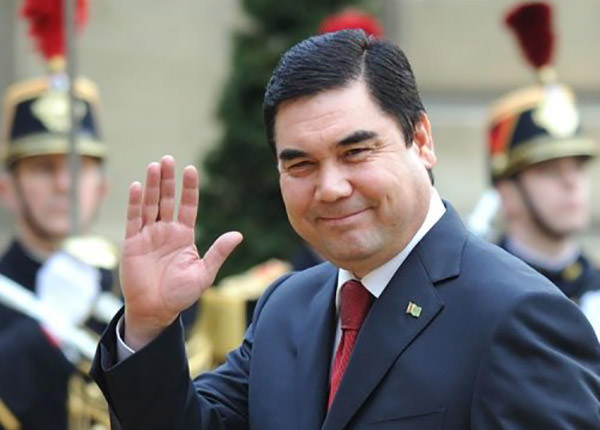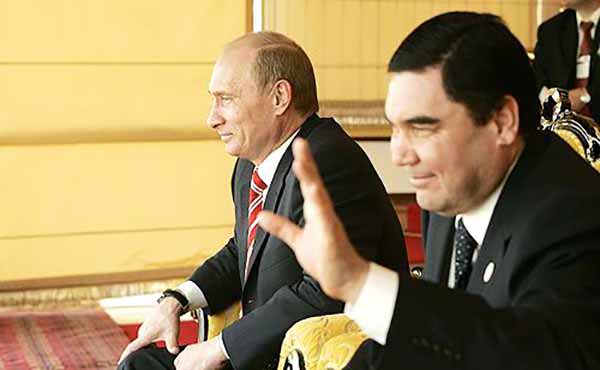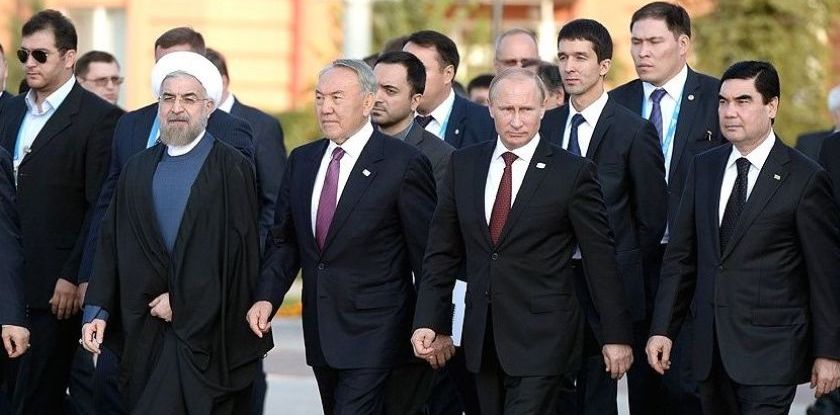On Dec. of 2017 Ashkhabad will celebrate 22nd anniversary of neutrality of Turkmenistan. Politics of “positive neutrality” from Sep. 2016 became an essential part of the content of Turkmenistan’s constitution. And despite what outside observers and multiple critics might say, resolution n50/80 on “Constant neutrality of turkmenistan” passed on Dec. 12 1995, by the UN general assembly is an real foreign policy achievement in the interests of that country.
Politics of neutrality of Turkmenistan means that this Central Asian state will not take anyone’s side in any conflicts and doesn’t strive to enter into any alliances. However, this doesn’t interfere with Turkmenistan’s ability to participate in international economic organizations. At the same time, the country may present its territory as a neutral place for meeting for conflicting parties.
In that sense, a widespread information received earlier, about a possibility of opening of Islamic movement Taliban’s office in Ashkhabad falls within Turkmen foreign policy doctrine of positive neutrality. However, this issue isn’t fully resolved, especially since there isn’t much interest in this from a Turkmen side. For Ashkhabad it is enough to have informal channels of communication with the goal of regulating issues on the Afghan border and securing stability of supply of electric power into Afghanistan. Opening of the Taliban office, which today isn’t a holistic structure, won’t in any way speed up the implementation of gas pipeline project TAPI, but could harm it even more, in case the office will be opened by “non talibans”. One shouldn’t also forget that Qatar was never a supporter of TAPI.
In early 2017 Turkmenistan has held essentially non-alternative presidential elections, results of which was prolonged to a 7-year period, authority of the acting president Gurbanguly Berdymuhamedov. Implemented changes into legislation, including cancellation of age restrictions, created conditions for him to be a life-long president and essentially created an opportunity for hereditary power transfer.

Due to this we can speak about preservation of current stability in this Central Asian state, however, further worsening of the socio-economic situation could affect it. The expensive V Asian Games in closed spaces and in martial arts, expenses on which by different accounts exceeded 7 bil. USD, were helf for prestige of Turkmenistan in an absolutely unsuitable for its economy period and as a result were laid as an additional burden on the population. Moreover after their conclusion the budget of the country will need to have an additional article of expenses on sustaining of the built infrastructure (which likely won’t ever become lucrative).
Detractors of Turkmen regime are never tired of reminding, that Turkmenistan remains a conglomerate of tribes, in which Teke, who themselves are divided into several competing branches, historically assumed a privileged position. Today, a slew of threats exists in Turkmenistan, including disproportional regional development, inner migration related to it, negative dynamics in the quality of life of the population, which given the desire could easily be projected to abovementioned inter-tribe relations. By the way, no legal opposition exists in Turkmenistan as an institute: those who disagree either live outside the country, or are detained in prisons and correctional facilities, others prefer not to disapprove publicly, fearing persecution.
In early november Ashkhabad has held another – 22nd international conference Oil and gas of Turkmenistan. A surveyed participant indicated that it was held on a smaller scale than last year. During his speech, chairman of GK Turkmengaz Myrat Archaev announced that Ashkhabad can and is technically ready to export natural gas into CIS countries and eastern Europe using the cross-country gas line “Central Asia – Center”. However, situation, though theoretically possible looks unlikely.
Maybe it will start getting fixed in 2018, when Gazprom renews buying of Turkmen gas; though it’s not necessarily has to be Gazprom. It could be done by Rosneft if it gets the access to the pipe. An agreement on strategic partnership, that was passed in October, as part of the official visit of president Putin to Turkmenistan is only a framework and work needs to be done on its content and meaning.

But the time today is clearly not in Ashkhabad’s favor. Economy of Turkmenistan continues to be heavily reliant on export of natural gas, which at its best years of exports to Iran and RF and through RF and China provided up to 90% of export profits and relatively high quality of life of population better than its neighbors. However, today due to conflicts with Iran and Russia, the main purchaser of natural gas remains China, of which Turkmenistan is heavily depended on, especially considering that profits from exports of gas mainly goes to paying off Chinese loans.
Due to commercial quarrels with Russia and Iran Turkmenistan is forced to decrease volumes of extraction of natural gas, since China also doesn’t rush to increase its imports from Turkmenistan. Thus, in 2016 in Turkmenistan 66,8 bil cubic meters were extracted, which was 4% less than in 2015 (69,6 bil cubic meters – based on data from statistical review of world economy by British Petroleum). Postponing of implementation based on objectives reasons related to TAPI, which competes with project of Iran and Qatar, doesn’t allow to fix the way things are. Also on November 1, ministry of energy of Russia and Iran signed a memorandum on supporting the project of exporting of gas from Iran into India. This costly project which spans 1200 km of sea floor is meant to be alternative to gas line Iran-Pakistan-India which isn’t being implemented for political reasons between Iran and Pakistan and Pakistan and India.
Demand for natural gas is forecasted to be at the level of up to 100 bil. cubic meters by 2025 (today it is at the 50 bil. cube meters with its own production of 27 bil. in 2016). By 2025, equity production is expected to be no more than 40 bil. Thus, India needs an import of gas, exceeding 50 bil. cube meters a year, which together with Pakistan makes it attractive market for gas suppliers.
Gazprom announced its intentions to participate in the building of the gas pipe at the seafloor of Persian gulf and in the development of gas deposits in Iran. Moreover, Russian gas giant may start supplying gas to north Iran through Azerbaijan while in exchange Iran will give Gazprom equivalent volumes of its own gas for export to India using the new gas pipe. Economy of such barters supplies looks more attractive compared to projects of Gazprom of exporting Russian gas into India via one of the discussed routes.
Today north of Iran I supplied both with its own gas and with the one imported from Turkmenistan However, the prolonged quarrels may push Iran to finally deny Turkmen gas and replace it with Russian one, which can be supplied en route via Azerbaijan.
Thus, recently director of Iranian national gas company, who is also the deputy head of the ministry of oil of Iran, Hamid Reza Araki announced Iran’s disinterest of transit of Turkmen gas into Turkey through its territory, but this won’t get in the way of its supplies into Azerbaijan. Thus, in case of implementation of achieved preliminary agreement between Russia and Iran about aforementioned scheme of exchange supplies, situation with the export of Turkmen gas may get even worse, since Azerbaijan may stop needing even small volumes of Turkmen gas, supplied en route through Iran. In the existing conditions, with the enviable tenacity, Turkmenistan continues building of a section of TAPI on its territory and aims to finish it by the end of 2019. What is going to be next, still isn’t clear. Recently a new doctrine, announced by the US in relation to Afghanistan proposes to increase the role of India on the issue of recovering of economy of the troubled country. However, it isn’t clear how much this will speed up the pace of implementation of TAPI. Most surveyed experts tend to think that it won’t have an effect on implementation. The US doesn’t have this goal either.
The project of transcaspian gasline, despite its political lobbying by the EU still remains a mythical project due to its unattractiveness, both for Azerbaijan and disapproval of it by Iran and Russia. Thus, the existing world economic and political events continue to have a negative effect on the prospects of diversification of export of Turkmen natural gas and thus on the economy of Turkmenistan as a whole.
Geopolitical situation and the fall of prices for hydrocarbon resources are pusing Turkmenistan to adjust the goals of socio-economic development. The authorities of Turkmenistan are trying to fix the situation, based on the harsh circumstance. In particular, keeping them in mind Ashkhabad developed a project called Turkmenistan president’s programs on socio-economic development of the country in 2018-2024, which recently was presented to the assembly of elders.
Turkmenistan is trying to solve the situation that has arisen, by growing exports of electric power into Afghanistan, Iran, Turkey, producing and exporting liquefied petroleum gas and increasing the volumes of refinement of natural gas within the country. Due to this, they have started production of LPG at the Turkmenbashy complex of oil-refinement plants and installments of the group of deposits Naip, and Turkmen government announced this year an international contract for building of two installments for procurement of LPG at the booster station Yilanly in the Tashauz oblast. Capacity of installments will be 70 thousand tons of LPG a year and 24 tons of gas condensate which will allow to refine 2 bil. annually.
The aforementioned development program for the next 7 years oversees building a plant close to Ashkhabad producing 600 thousand tons of ecologically pure gasoline of the A-92 type, out of natural gas. Also, there are plans of building gas-chemical complex for producing polypropylene, polyvinyl chloride, caustic soda and liquid chlorine, in Balkan velayat. In the same area, in the city of Garabogaz there are plans to next year initiate carbamide plant with an annual power of 1 mil. 155 thousand tons. In order to transport production of this plant into Kazakhstan and other countries, next year a building of a new bridge through the bay will start, it will be part of Turkmenbashy-Garabogaz-Kazakhstan line.
In 2013-2016 6 new gas electric stations were started in Turkmenistan. As a result, today in the country there are 13 active electric stations, in which 15 steamturbine and 32 gas-turbine blocs produce energy.
In the near future there are plans to build another 8 gas-turbine power stations. Due to this, Turkmenistan is planning to increase exports of electric power into abovementioned 3 states as well as into Kazakhstan, Armenia, Uzbekistan and through Uzbekistan into Tajikistan. In this regard a recent statement that Uzbekistan has finished preparations of its energy system for transfer of electricity from Turkmenistan, and when the latter will make contracts on supplying of electric power to other countries of the region, Tashkent will involve these lines and will implement the transit, is important.
It must be said that transfer of power in the neighboring Uzbekistan and the talks of two leaders that took place in March in Ashkhabad, created conditions for positive dynamic of bilateral relations, however, potential of development of trade-economic cooperation is limited by financial capabilities of two states. Nonetheless what is clear is the attempts of normalizing relations at the political level which is an important element of regional stability. Moreover, signed agreement of strategic partnership allows to start a more coordinated policy towards Afghanistan, creates conditions for direct contacts between the oblasts and solve existing contradictions in using trans-border water resources.
However, development of Uzbek-Turkmen relations has a ceiling. Also one must not forget, that as the volume of extraction of natural gas in Uzbekistan increases, it might become Turkmenistan’s competitor in supplying of blue fuel into China. However, this isn’t the only circumstance that will determine further development of bilateral cooperation. For Uzbekistan, Turkmenistan is an important transit state, in particular on the route “Uzbekistan-Turkmenistan-Caspian sea-South Caucasus” with an entry to black sea ports of Georgia, Turkey, Romania. There is also a project of a transport corridor Uzbekistan-Turkmenistan-Iran-Oman. Thus, further development of Turkmen-Uzbek relations has a good foundation and prospects.

In this backdrop, bilateral relations between Turkmenistan and Kazakhstan have come to somewhat of a halt. At least, recently there were no new or ground-breaking ideas in favor of their intensification. Despite there being no unsolvable issues between two countries, first (after presidential elections) government visit of Gurbanguly Berdymuhamedov that took place in April in Astana, and signing of agreement of strategic cooperation didn’t fill them with additional conet.
At the same time, with time Kazakhstan itself may become a competitor in supplying of Turkmen natural gas using gas line Turkmenistan-Uzbekistan-Kazakhstan-China. In proving this, it is worth reminding, that Kazakhstan has signed an agreement with China on beginning of supplies of 5 bil. cube meters of Kazakh natural gas a year starting October 15. Nonetheless, recent launch of the railway Kazakhstan-Turkmensitan-Iran increases prospect of development of trade-economic cooperation and transit potential of Turkmenistan, secures a direct entrance to Persian gulf. Moreover, Turkmenistan may become the partner, on which territory Uzbekistan and Kazakhstan will be able to set up a mutually-beneficial cooperation to all sides, and thus confirm the thesis on absence of competition between these two important members of the region.




